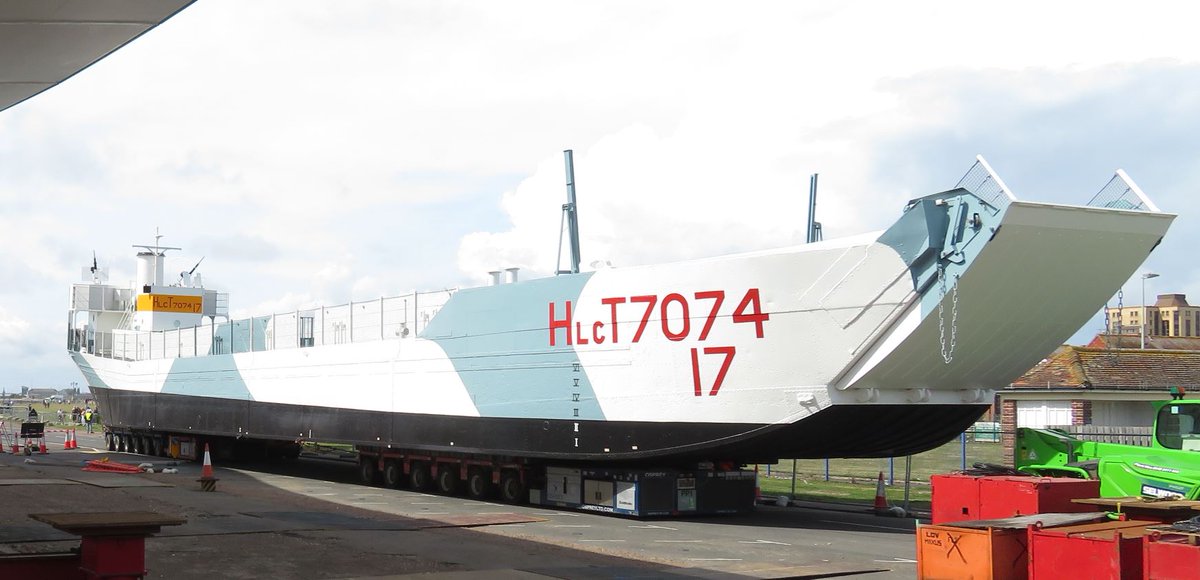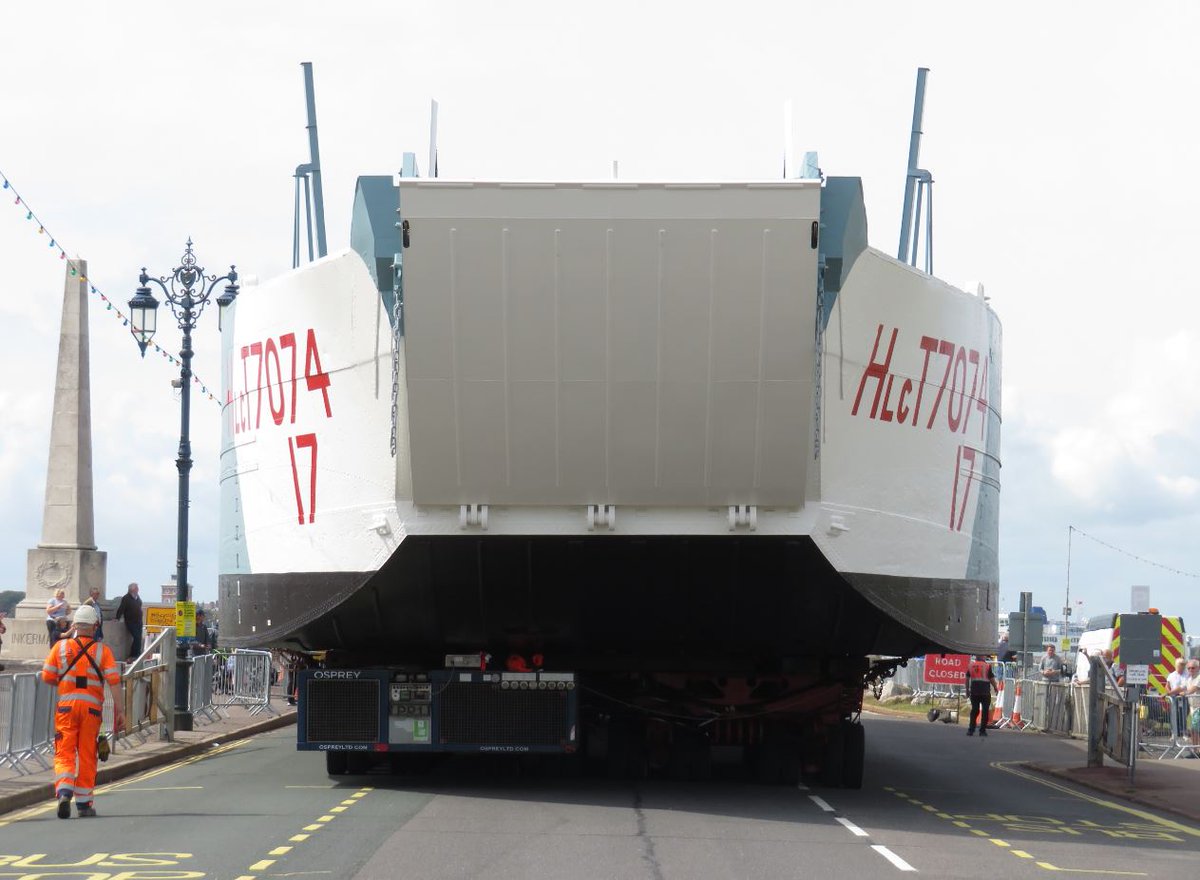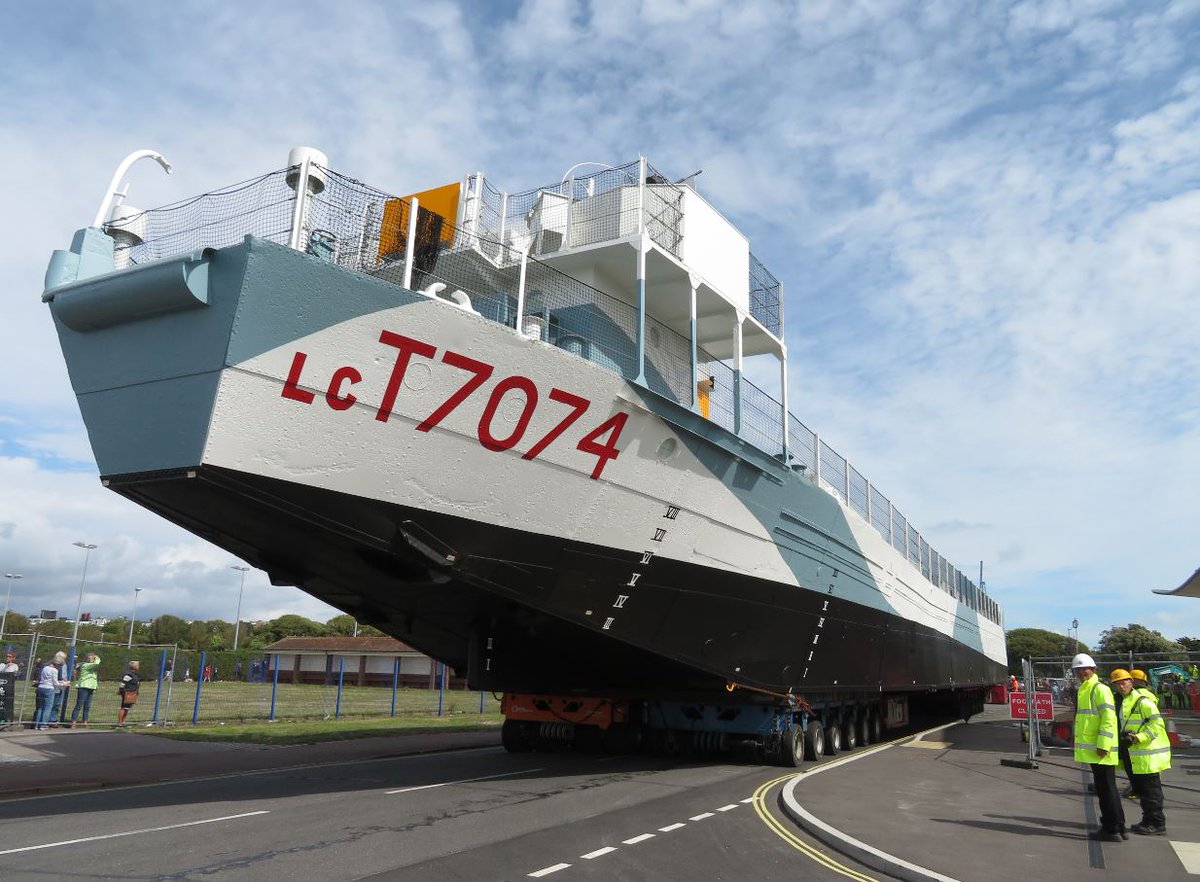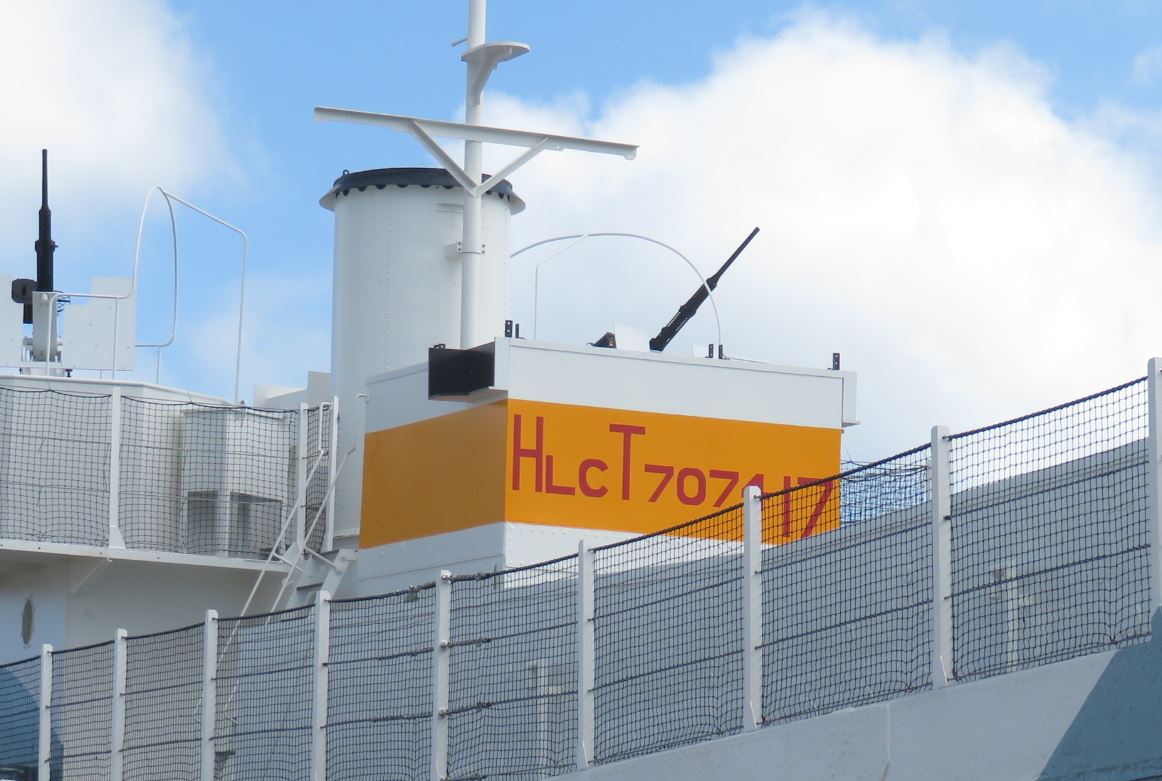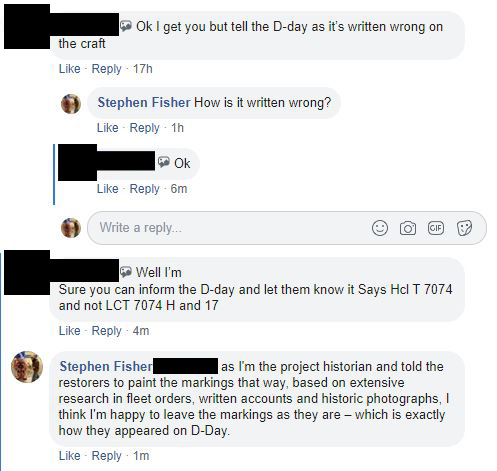I& #39;ve been asked a few times (both on social media and in person) about #LCT7074& #39;s eclectic markings, so here are a few details to help make sense of it all. 1/7
The H in front of her pennant on the bow is her squadron, and the 17 is her flotilla. These were only on the bow, not the stern. The size of the pennant conforms to Confidential Admiralty Fleet Orders 2189/43 & helpfully the outline was engraved into the hull by the builders. 2/7
The yellow band around the bridge is the force identifier for Force L, the immediate follow up wave that landed at Sword, Juno and Gold beaches (7074 went to Gold). This has raised quite a few eyebrows I know, because a lot of people expected it to be red... 3/7
There are a glut of original colour photographs from D-Day showing red markings on landing craft.
What& #39;s little realised is that these vessels are all bound for Juno. Canadian cameramen had access to colour cameras and, unsurprisingly, they mainly photographed Force J. 4/7
What& #39;s little realised is that these vessels are all bound for Juno. Canadian cameramen had access to colour cameras and, unsurprisingly, they mainly photographed Force J. 4/7
Each Commonwealth task force had an ID colour - Green for S, Red for J, Blue for G and yellow for L. Unfortunately the proliferation of Force J photos has lead many to assume all landing craft had red stripes on them. Here& #39;s Richard Willis& #39; painting of Sword beach... 5/7
Colourisation can make old B/W images easier to interpret, but details can often end up incorrect. Here& #39;s #LCT7074 with 886, but she was part of Force G, so the bridge stripe was blue, not red (the funnel was another colour, but that& #39;s another thread!) 6/7 https://twitter.com/colour_history/status/1297932698187632643">https://twitter.com/colour_hi...
Hopefully this explains the range of colours, letters and sizes on 7074!
Of course a lot of experts have appeared in the last 24 hours. If only they& #39;d come forward with their expertise sooner.
If only... 7/7
Of course a lot of experts have appeared in the last 24 hours. If only they& #39;d come forward with their expertise sooner.
If only... 7/7

 Read on Twitter
Read on Twitter